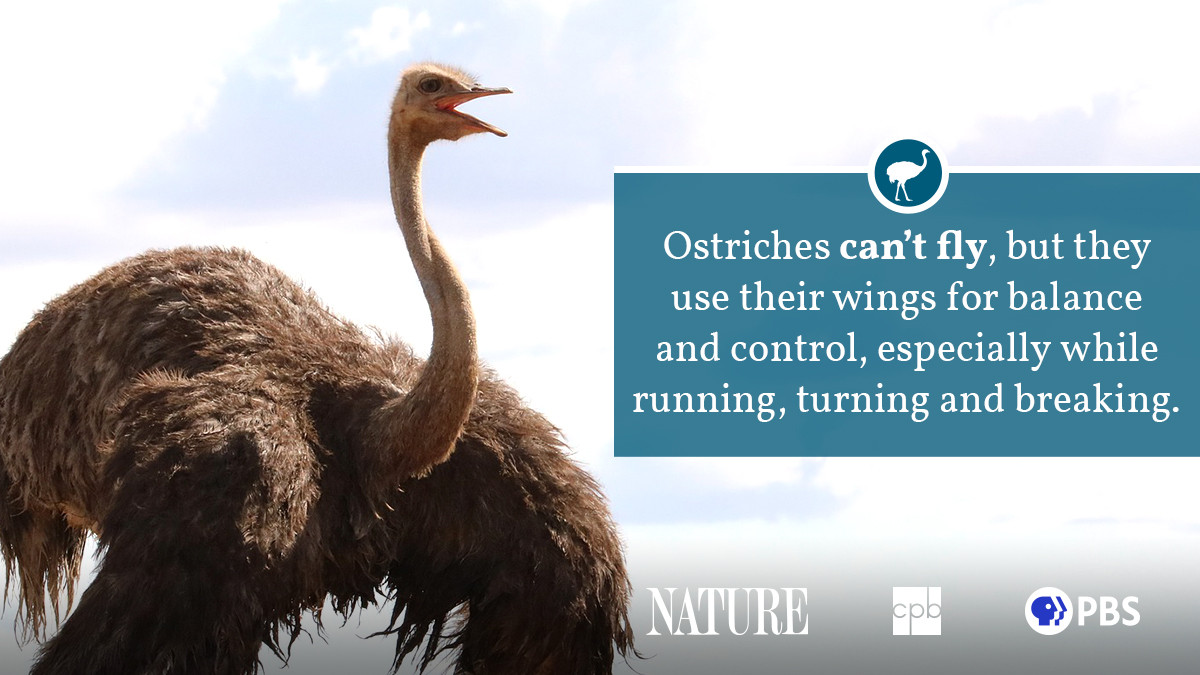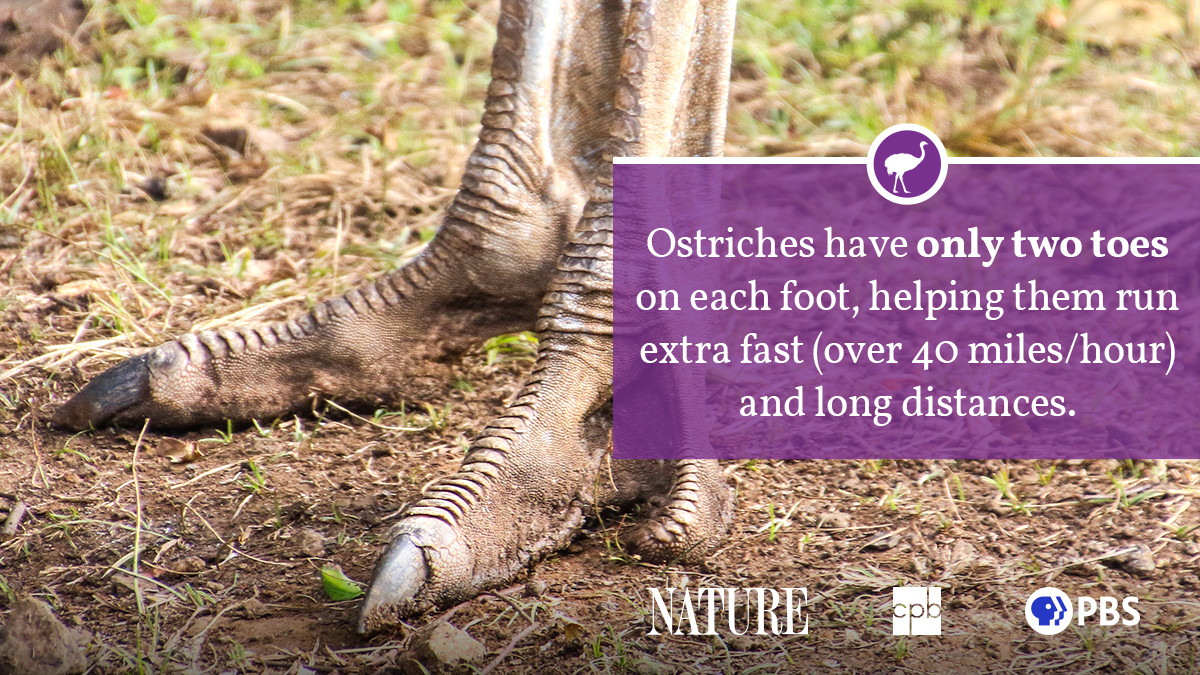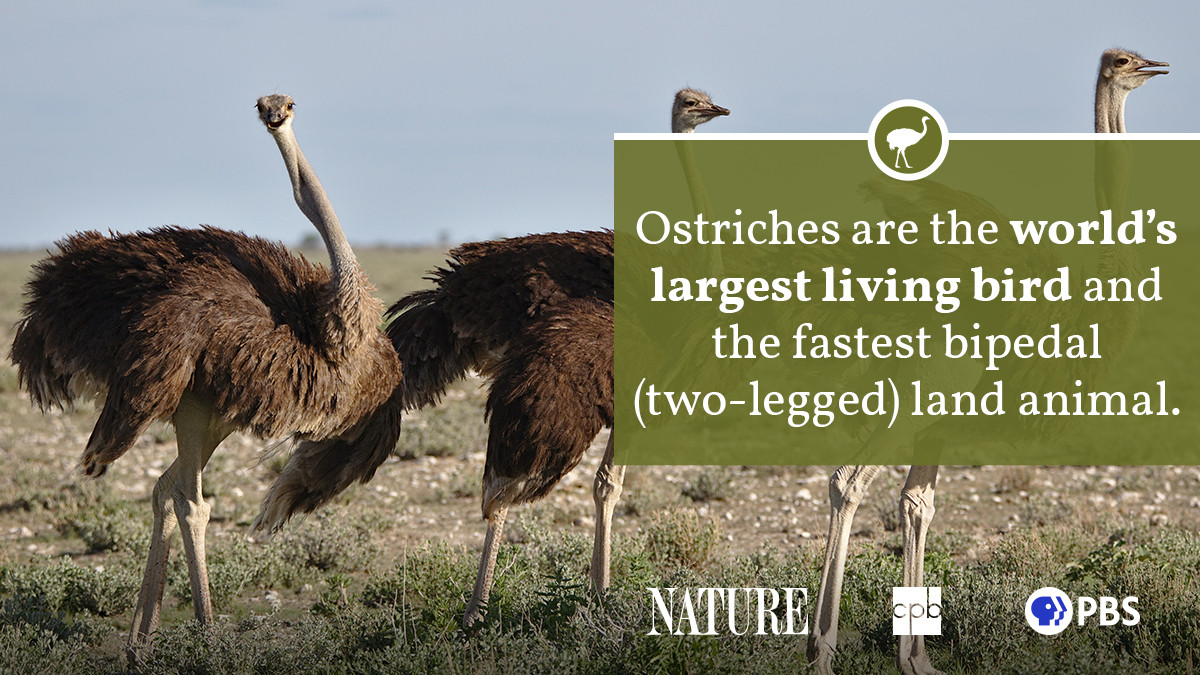Are you planning a trip to Vietnam and curious about the wildlife you might encounter? As your trusted travel advisor at SIXT.VN, we’re here to answer your questions, including whether ostriches travel in herds. Discover fascinating facts about these incredible birds and how SIXT.VN can make your Vietnam adventure seamless with our reliable airport transfer, comfortable hotel booking, exciting Hanoi tours, and convenient flight booking services. Let us elevate your travel experience with our expert travel advisory and comprehensive travel planning.
1. Do Ostriches Typically Travel In Herds?
Yes, ostriches typically travel in groups, often referred to as herds or flocks. These groups usually consist of around 10 birds but can sometimes swell to include 100 or more individuals. These social structures provide numerous advantages for these large, flightless birds. According to research from the African Wildlife Foundation, ostriches form these groups for better defense against predators and to improve their chances of finding food.
1.1. What Are The Benefits Of Ostriches Traveling In Herds?
Traveling in herds offers ostriches several survival advantages:
- Enhanced Predator Detection: More eyes mean a greater chance of spotting danger early.
- Improved Defense: A group can present a more formidable defense against predators.
- Shared Resources: Ostriches can collectively find food and water more efficiently.
- Social Interaction: Herds provide opportunities for social bonding and learning.
1.2. How Do Ostrich Herds Maintain Social Order?
Ostrich herds have a distinct social hierarchy, typically consisting of:
- Dominant Male: This male establishes and defends the territory.
- Main Hen: The dominant female, responsible for laying eggs.
- Other Females: These females also contribute to the communal nest.
- Subordinate Males: Younger or weaker males that follow the lead of the dominant male.
This pecking order ensures stability and efficient resource management within the group.
2. What Does The Social Structure Of An Ostrich Herd Look Like?
The social structure of an ostrich herd is fascinating and complex, revolving around a dominant hierarchy and cooperative behaviors. Understanding this structure can provide insights into their daily routines and survival strategies.
2.1. The Role Of The Dominant Male In An Ostrich Herd
The dominant male plays a crucial role in the herd’s dynamics. His responsibilities include:
- Territorial Defense: Protecting the herd’s territory from intruders.
- Mate Selection: Choosing the main hen and other females for mating.
- Leading the Group: Guiding the herd to food and water sources.
- Predator Alert: Keeping a watchful eye for potential threats.
2.2. The Significance Of The Main Hen In Ostrich Social Structure
The main hen also holds a significant position in the herd, with responsibilities such as:
- Egg Laying: Laying her eggs in the center of the communal nest.
- Incubation: Sharing incubation duties with the dominant male.
- Chick Rearing: Helping to raise and protect the young ostriches.
- Maintaining Order: Assisting the dominant male in keeping the herd in order.
2.3. How Do Subordinate Ostriches Contribute To The Herd?
Even subordinate ostriches play a role in the herd’s survival:
- Foraging: Assisting in finding food and water for the group.
- Predator Detection: Acting as additional eyes to spot danger.
- Social Learning: Learning from the dominant individuals in the herd.
- Future Leaders: Gaining experience to potentially become dominant in the future.
3. What Factors Influence The Size Of Ostrich Herds?
The size of ostrich herds can vary depending on several environmental and social factors. Understanding these influences can shed light on the adaptability of ostriches in different habitats.
3.1. How Does Food Availability Affect Ostrich Herd Size?
Food availability is a key factor determining herd size:
- Abundant Resources: When food is plentiful, larger herds can be supported.
- Scarce Resources: During droughts or lean times, herds may split into smaller groups to improve foraging efficiency.
 Ostriches Grazing in Savanna with Abundant Vegetation
Ostriches Grazing in Savanna with Abundant Vegetation
Alt Text: Ostriches foraging for food in a lush savanna, reflecting ample food resources.
3.2. The Impact Of Predation On Ostrich Herd Dynamics
Predation pressure also plays a significant role:
- High Predation: In areas with many predators, larger herds offer better protection.
- Low Predation: In safer environments, ostriches may form smaller, more manageable groups.
3.3. Seasonal Changes And Their Effect On Ostrich Herds
Seasonal changes can influence herd size and behavior:
- Breeding Season: During breeding season, herds may disperse as males establish territories and attract mates.
- Dry Season: In dry seasons, ostriches often gather near water sources, leading to larger aggregations.
*According to the San Diego Zoo, these seasonal changes are crucial for understanding ostrich behavior and conservation.
4. Where Can You Observe Ostriches In Their Natural Habitat?
If you’re interested in seeing ostriches in their natural environment, several locations in Africa offer excellent opportunities for wildlife viewing.
4.1. Top Destinations For Ostrich Sightings In Africa
Some of the best places to observe ostriches include:
- Serengeti National Park, Tanzania: Renowned for its vast grasslands and abundant wildlife.
- Kruger National Park, South Africa: A diverse ecosystem with a high density of ostriches.
- Namib-Naukluft National Park, Namibia: Home to unique desert-adapted ostriches.
- Masai Mara National Reserve, Kenya: Famous for its annual wildebeest migration and ostrich sightings.
*SIXT.VN can arrange guided tours to these locations, ensuring a memorable wildlife experience.
4.2. What Are The Best Times To Visit For Ostrich Watching?
The best time to visit these locations for ostrich watching is typically during the dry season:
- Dry Season: From June to October, when vegetation is sparse and wildlife is easier to spot.
- Avoid Rainy Season: The rainy season (November to May) can make travel difficult and reduce visibility.
4.3. Tips For Ethical Ostrich Viewing
When observing ostriches in the wild, it’s essential to follow ethical viewing practices:
- Maintain Distance: Keep a safe distance to avoid disturbing the birds.
- Avoid Feeding: Do not feed the ostriches, as it can alter their natural behavior.
- Respect Habitat: Stay on marked trails and avoid damaging their environment.
- Support Local Guides: Hire local guides who understand the birds’ behavior and can provide valuable insights.
5. What Role Do Ostriches Play In Their Ecosystems?
Ostriches play a crucial role in maintaining the balance of their ecosystems. Their presence influences vegetation, seed dispersal, and even the behavior of other animals.
5.1. How Do Ostriches Contribute To Seed Dispersal?
Ostriches are important seed dispersers:
- Diet: They consume a variety of seeds as part of their diet.
- Droppings: Undigested seeds are dispersed through their droppings, helping plants spread to new areas.
- Habitat Restoration: This process aids in habitat restoration and biodiversity.
5.2. Ostriches As A Food Source For Other Animals
Ostriches also serve as a food source for various predators:
- Predators: Lions, cheetahs, hyenas, and other carnivores prey on ostriches.
- Ecosystem Balance: This predation helps regulate ostrich populations and maintain ecosystem balance.
- Scavengers: Vultures and other scavengers feed on ostrich carcasses, contributing to nutrient cycling.
5.3. Their Impact On Vegetation And Landscape
Ostriches influence vegetation patterns through:
- Grazing: Their grazing habits affect the growth and distribution of plants.
- Trampling: Their large size can impact soil structure and vegetation density.
- Ecosystem Engineers: These actions can create microhabitats and influence landscape dynamics.
6. How Do Ostriches Communicate Within Their Herds?
Communication is vital for maintaining social cohesion and coordinating activities within ostrich herds.
6.1. Vocalizations Used By Ostriches
Ostriches use various vocalizations to communicate:
- Booms: Deep, resonant calls used by males to establish territory and attract mates.
- Hisses: Warning signals to alert the herd to danger.
- Chirps: Soft calls used by chicks to communicate with their parents.
6.2. Body Language And Postures In Ostrich Communication
Body language is also crucial:
- Neck Posture: High neck posture indicates alertness, while a lowered neck may signal submission.
- Wing Displays: Males use wing displays during courtship rituals.
- Feather Ruffling: Ruffled feathers can indicate aggression or excitement.
6.3. The Role Of Visual Signals In Ostrich Herds
Visual signals play a key role:
- Coloration: Male ostriches have distinct black and white plumage to attract females.
- Movement: Synchronized movements within the herd can signal cooperation or alarm.
- Eye Contact: Direct eye contact can convey dominance or challenge.
 Male Ostrich Displaying Feathers During Courtship
Male Ostrich Displaying Feathers During Courtship
Alt Text: A male ostrich displaying his striking black and white plumage during courtship, showcasing visual communication.
7. What Are The Unique Adaptations That Allow Ostriches To Thrive?
Ostriches have evolved several unique adaptations that enable them to thrive in harsh environments.
7.1. Physical Adaptations For Speed And Endurance
Physical adaptations include:
- Long Legs: Powerful legs for running at speeds up to 43 miles per hour.
- Two-Toed Feet: Enhanced balance and traction for running on open terrain.
- Streamlined Body: Reduces wind resistance for efficient running.
7.2. Physiological Adaptations For Water Conservation
Physiological adaptations for water conservation:
- Efficient Kidneys: Minimize water loss through urine.
- Dry Feces: Reduces water content in waste.
- Water Absorption: Can absorb water from food sources.
*According to the African Wildlife Foundation, these adaptations are crucial for surviving in arid environments.
7.3. Behavioral Adaptations For Surviving In Harsh Climates
Behavioral adaptations include:
- Diurnal Activity: Active during the cooler parts of the day.
- Seeking Shade: Resting in shaded areas to avoid overheating.
- Dust Bathing: Helps regulate body temperature and control parasites.
8. How Do Ostrich Chicks Learn To Behave In A Herd?
Ostrich chicks learn herd behavior through a combination of instinct and social learning.
8.1. The Role Of Parental Guidance In Ostrich Chick Development
Parental guidance is essential:
- Protection: Parents protect chicks from predators.
- Foraging Skills: Parents teach chicks how to find food and water.
- Socialization: Parents introduce chicks to herd dynamics and social norms.
8.2. Social Learning And Mimicry In Ostrich Herds
Social learning and mimicry are also important:
- Observation: Chicks observe and mimic the behavior of older ostriches.
- Group Activities: Participating in group activities like foraging and resting.
- Learning Hierarchy: Understanding the social hierarchy and their place within it.
8.3. Instinctive Behaviors In Young Ostriches
Instinctive behaviors include:
- Following Parents: Automatically following their parents from birth.
- Alarm Calls: Responding to alarm calls with appropriate behavior.
- Social Bonding: Forming bonds with other chicks and adults in the herd.
9. What Are Some Common Misconceptions About Ostrich Behavior?
Several misconceptions surround ostrich behavior. Let’s debunk some common myths.
9.1. Debunking The Myth That Ostriches Bury Their Heads In The Sand
The myth that ostriches bury their heads in the sand is false:
- Reality: Ostriches lie low to the ground when threatened, which can give the illusion that they are burying their heads.
- Purpose: This behavior helps them blend in with the environment and avoid detection.
9.2. Addressing The Idea That Ostriches Are Unintelligent Birds
The idea that ostriches are unintelligent is also incorrect:
- Reality: Ostriches exhibit complex social behaviors and problem-solving skills.
- Evidence: They can learn from their environment and adapt to changing conditions.
9.3. Correcting Misunderstandings About Ostrich Aggression
Misunderstandings about ostrich aggression are common:
- Reality: Ostriches are generally not aggressive unless threatened or provoked.
- Defense: They may use their powerful legs and claws to defend themselves or their young.
 Ostriches in a Natural Habitat
Ostriches in a Natural Habitat
Alt Text: Ostriches standing alert in their natural habitat, showcasing their observant nature and social behavior.
10. How Can SIXT.VN Enhance Your Ostrich Watching Experience In Vietnam?
While ostriches are not native to Vietnam, SIXT.VN can enhance your wildlife viewing and travel experiences in other ways.
10.1. Arranging Guided Tours To Wildlife Sanctuaries In Vietnam
SIXT.VN can arrange guided tours to various wildlife sanctuaries in Vietnam:
- National Parks: Explore national parks like Cat Tien and Cuc Phuong.
- Wildlife Reserves: Visit wildlife reserves to see diverse species.
- Expert Guides: Benefit from knowledgeable guides who can enhance your understanding of local ecosystems.
10.2. Providing Convenient Transportation Options For Wildlife Excursions
Convenient transportation options for wildlife excursions:
- Airport Transfer: Start your trip with hassle-free airport transfer services.
- Private Car Hire: Enjoy the flexibility of private car hire for exploring at your own pace.
- Comfortable Vehicles: Travel in comfort with our range of well-maintained vehicles.
10.3. Offering Accommodation Recommendations Near Nature Reserves
Accommodation recommendations near nature reserves:
- Eco-Lodges: Stay in eco-friendly lodges that blend with the environment.
- Hotels: Choose from a variety of hotels near popular nature reserves.
- Custom Packages: Benefit from custom travel packages that combine accommodation and tours.
Planning a trip to Vietnam and eager to explore its natural beauty? While you might not find ostriches roaming here, SIXT.VN is your ultimate partner for a seamless and enriching travel experience. From the moment you arrive, our reliable airport transfer service ensures a stress-free start to your adventure.
Settle into one of our handpicked hotel accommodations, perfectly suited to your preferences and budget. Embark on captivating Hanoi tours, unveiling the city’s rich history and vibrant culture with our expert guides. And with our convenient flight booking service, getting here is as easy as can be.
At SIXT.VN, we understand the challenges of planning a trip, especially in a new country. Language barriers, unfamiliar customs, and logistical hurdles can be overwhelming. That’s why we offer comprehensive travel advisory services, ensuring you have all the information and support you need every step of the way.
Ready to turn your travel dreams into reality? Contact SIXT.VN today and let us tailor the perfect Vietnam adventure for you.
Address: 260 Cau Giay, Hanoi, Vietnam
Hotline/WhatsApp: +84 986 244 358
Website: SIXT.VN
FAQ: Frequently Asked Questions About Ostriches
1. How Fast Can An Ostrich Run?
Ostriches can run at speeds up to 43 miles per hour, making them the fastest birds on land.
2. What Do Ostriches Eat?
Ostriches are omnivores, eating a variety of plants, insects, and small animals.
3. How Big Is An Ostrich Egg?
Ostrich eggs are the largest of any living bird, weighing about 3 pounds and measuring 6 inches in length.
4. Where Do Ostriches Live?
Ostriches are native to Africa, inhabiting savannas and desert regions.
5. How Long Do Ostriches Live?
In the wild, ostriches typically live for 30 to 40 years, but in captivity, they can live up to 70 years.
6. Are Ostriches Dangerous To Humans?
Ostriches are generally not dangerous to humans unless threatened. They can deliver powerful kicks if they feel threatened.
7. Do Ostriches Migrate?
Ostriches do not migrate, but they may move locally in search of food and water.
8. What Is The Conservation Status Of Ostriches?
The common ostrich is listed as “Least Concern,” while the Somali ostrich is listed as “Vulnerable.”
9. How Do Ostriches Conserve Water In The Desert?
Ostriches have efficient kidneys and can absorb water from their food, helping them conserve water in arid environments.
10. What Is The Purpose Of Ostriches’ Long Necks?
Ostriches’ long necks help them spot predators from a distance and reach high vegetation.



